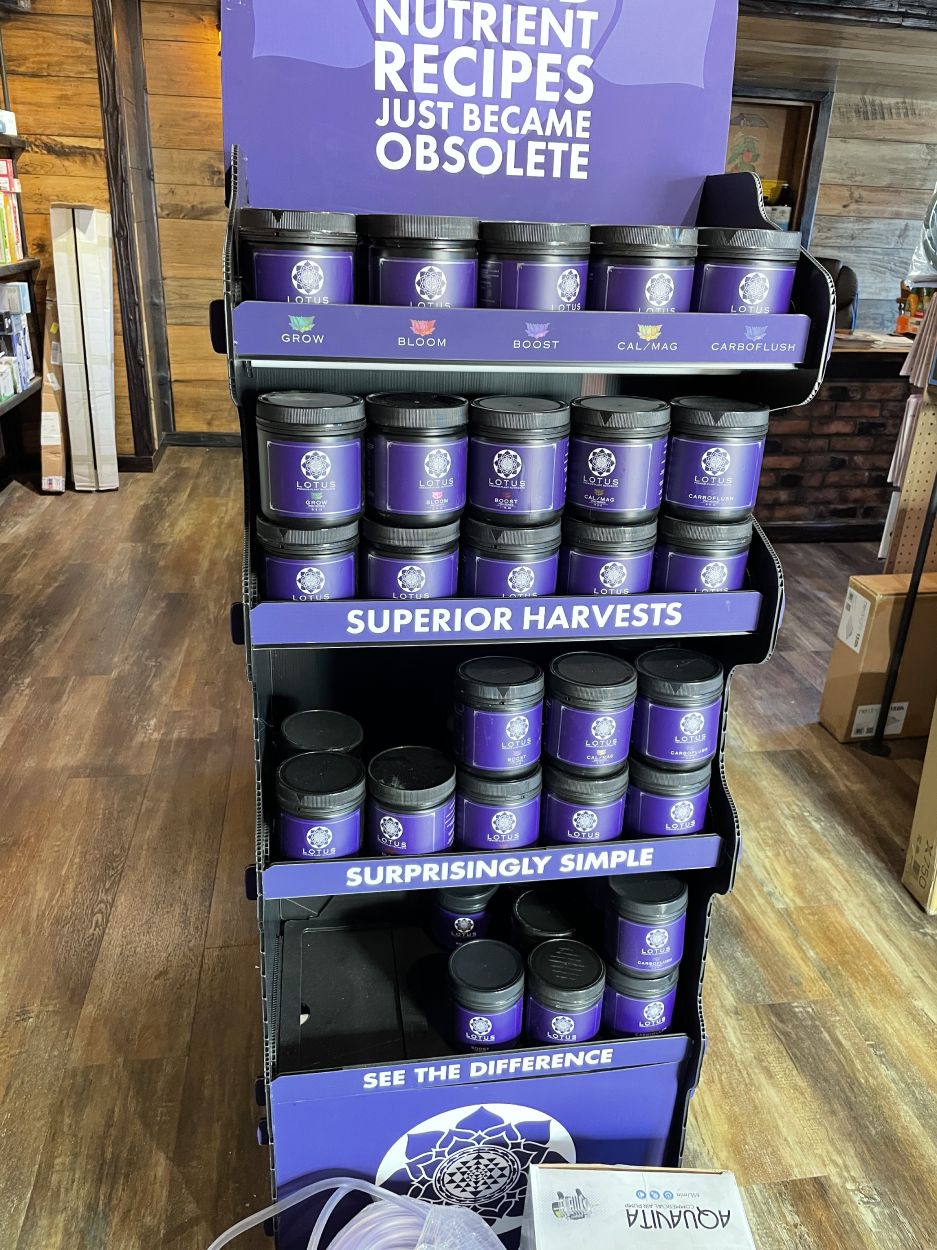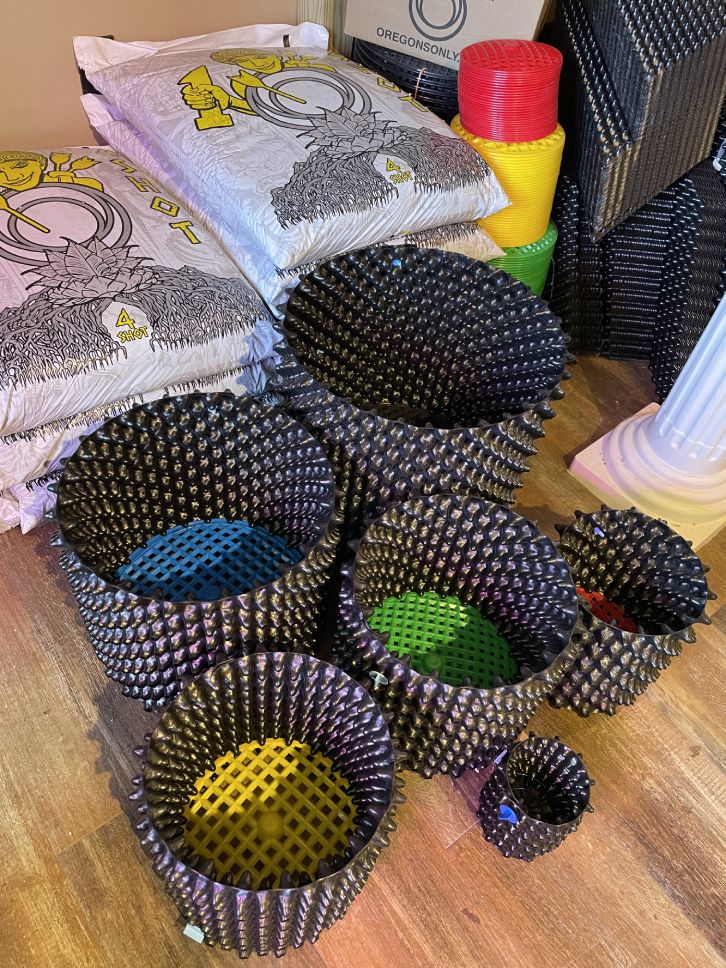Study the Globe of Hydroponics: Checking Out Different Types
Within the world of hydroponics exists a varied array of growing techniques that supply one-of-a-kind advantages for growing plants without soil. As we start this exploration of various hydroponic systems, we will discover the details of strategies like the Nutrient Film Technique (NFT), Deep Water Society (DWC), Wick System, Ups And Downs (Flooding and Drainpipe), and Aeroponics. Each approach presents a distinctive approach to supporting plants in a soil-less setting, appealing advancement and effectiveness in the realm of contemporary farming.

The Nutrient Film Method (NFT)
The Nutrient Film Strategy (NFT) is a hydroponic system that includes a constant flow of nutrient service over plant roots in a thin movie to promote effective nutrient uptake. This method makes use of a shallow stream of water that consists of dissolved nutrients, allowing the plant origins to have constant access to the essential elements for development - The Indoor Earthworm. The nutrient option flows along the base of the network, calling the origins and afterwards receding, providing an extremely oxygenated setting vital for root wellness
Since the nutrient option is recirculated, it requires less water compared to typical soil-based gardening. Additionally, the regulated atmosphere of the NFT system minimizes the threat of nutrient imbalances and illness, leading to much healthier plants.
Deep Water Culture (DWC)
Among the numerous hydroponic systems used for cultivating plants, Deep Water Society (DWC) attracts attention for its simple yet efficient layout. In a DWC system, plants are placed in web pots, allowing their roots to hang directly right into a nutrient option. This option is oxygenated making use of air pumps and air stones to make certain that roots receive an adequate oxygen supply. The key to success in DWC is maintaining the proper oxygen degrees in the nutrient service to stop origin rot and advertise healthy plant growth.
One of the key advantages of DWC is its low upkeep needs. With less relocating parts and no need for a complex watering routine, DWC is a beginner-friendly option for those brand-new to hydroponic gardening. In addition, the straight accessibility to oxygen and nutrients allows plants to uptake what they need much more effectively, usually causing faster growth rates and higher yields contrasted to conventional dirt growing techniques. Controlling water temperature and protecting against algae development in the nutrient service are essential considerations when carrying out a DWC system.
Wick System
In hydroponic growing, the Wick System is a passive technique that allows plants to formulate vitamins and mineral remedy with capillary action. This system is straightforward and ideal for novices as a result of its simpleness. It includes a growing tray full of an inert tool like perlite or vermiculite, where plants are positioned. A wick, typically made from products like cotton or nylon, prolongs from the expanding tray right into a storage tank full of the nutrient remedy. The capillary activity of the wick allows the nutrient remedy to relocate from the tank to the growing tray, ensuring a continuous supply of nutrients to the plants' roots. One of the advantages of the Wick System is its low expense and simplicity of configuration. It may not be appropriate for larger plants or those with high nutrient demands, as the easy nature of the system can lead to unequal nutrition distribution. Generally, the Wick System uses go to the website a straightforward and reliable method to practice hydroponic horticulture.
Ebb and Circulation (Flood and Drain)
Checking Out the Ebb and Flow (Flooding and Drainpipe) system provides understanding into a vibrant hydroponic strategy that rotates between flooding and draining pipes the plant origins with nutrient remedy. This system operates by periodically flooding the plant containers with a nutrient option from a tank and after that enabling the excess solution to drain pipes back. The process is normally regulated by a timer to guarantee routine flooding cycles, supplying the roots with oxygen as the solution recedes.
Ups and downs systems are functional and can fit numerous plant dimensions and types. They use a good balance of water retention and oygenation, promoting healthy root development. find more The periodic flooding helps provide nutrients straight to the origins, improving nutrient uptake effectiveness. Furthermore, the ups and downs activity prevents water stagnation, lowering the threat of root rot and other water-related concerns.
This method is preferred among hydroponic fanatics for its versatility, simpleness, and performance to various plant needs. With appropriate surveillance and maintenance, the Ebb and Circulation system can support durable plant growth in a regulated hydroponic atmosphere.
Aeroponics
Making use of a high-pressure misting system, Aeroponics is a sophisticated hydroponic technique that puts on hold plant roots in an oxygen-rich environment to promote optimal nutrient absorption and vigorous development. Unlike various other hydroponic techniques, which submerge origins in water or a nutrient service, Aeroponics supplies nutrients straight to the roots via a fine mist. This mist is sprayed at routine intervals, guaranteeing that the origins obtain a constant supply of water, oxygen, and nutrients.

Among the essential benefits of Aeroponics is its capability to maximize nutrient uptake while minimizing water usage. By providing nutrients straight to the origins, plants can absorb them more effectively, causing faster growth prices and greater yields. Additionally, the oxygen-rich environment developed by the misting system promotes root development and aids stop root conditions.
Aeroponics is especially well-suited for expanding leafy greens, herbs, and various other plants that grow in oxygenated settings. The Indoor Earthworm. Its efficient use of sources and ability to advertise quick development make it a popular choice for hydroponic lovers looking to attain optimal outcomes
Verdict
To conclude, hydroponics read more supplies a series of cutting-edge strategies for growing plants without soil. From the nutrient film technique to deep water culture, each technique has its own benefits and difficulties. By understanding and utilizing these different kinds of hydroponic systems, individuals can explore brand-new possibilities for sustainable agriculture and maximize plant growth in controlled atmospheres.

 Jennifer Grey Then & Now!
Jennifer Grey Then & Now! Jenna Jameson Then & Now!
Jenna Jameson Then & Now! Soleil Moon Frye Then & Now!
Soleil Moon Frye Then & Now! Susan Dey Then & Now!
Susan Dey Then & Now! Tyra Banks Then & Now!
Tyra Banks Then & Now!